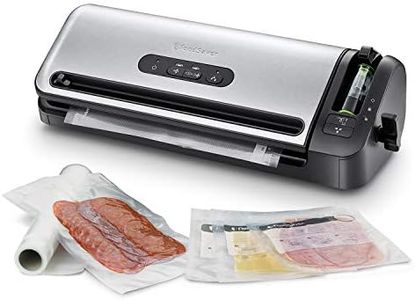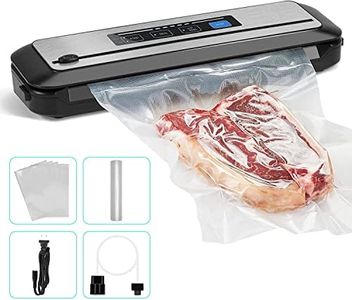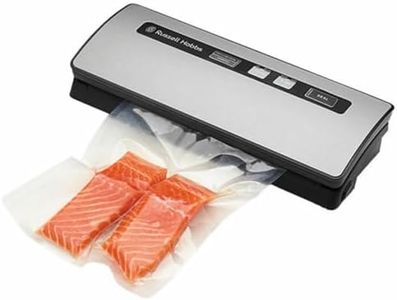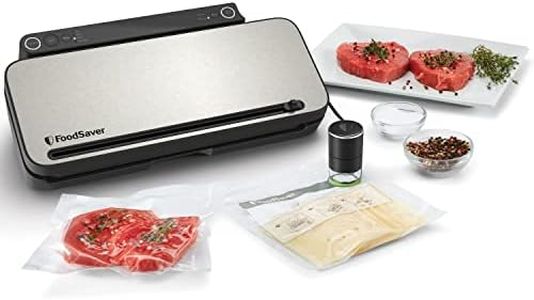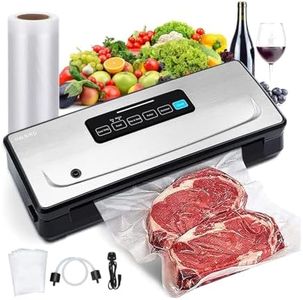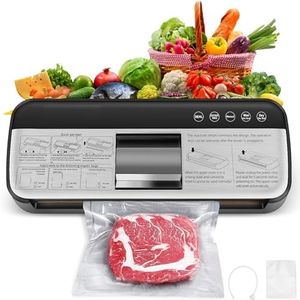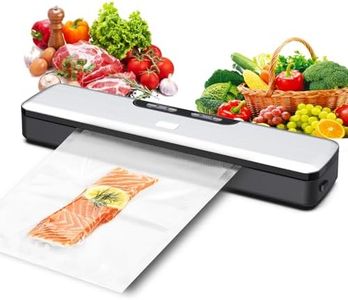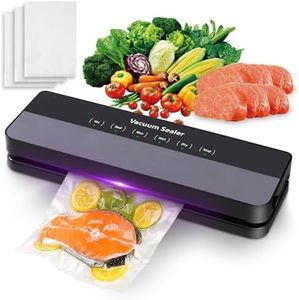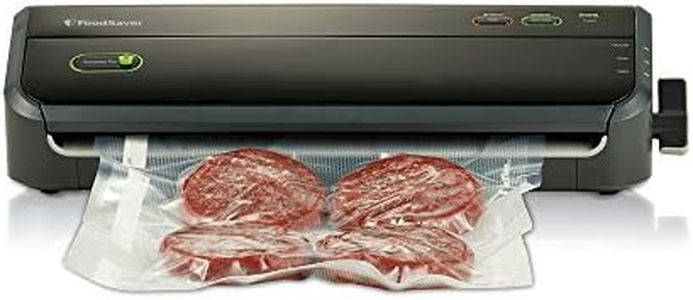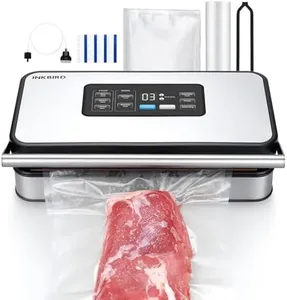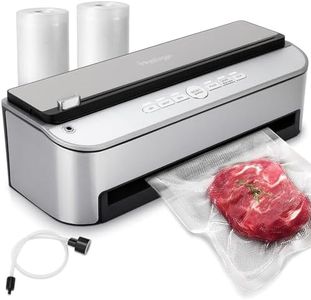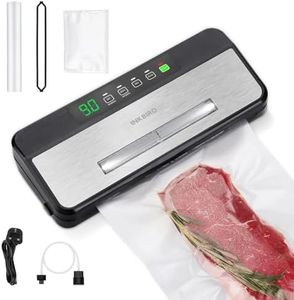We Use CookiesWe use cookies to enhance the security, performance,
functionality and for analytical and promotional activities. By continuing to browse this site you
are agreeing to our privacy policy
10 Best Food Vacuum Sealer Machine
From leading brands and best sellers available on the web.Buying Guide for the Best Food Vacuum Sealer Machine
Choosing a food vacuum sealer machine can make a big difference in how long your food stays fresh and flavorful. These machines work by removing air from specially designed bags or containers to prevent spoilage and freezer burn. When shopping for a vacuum sealer, it's important to consider what you'll be sealing, how often you'll use the machine, and where you'll store it. By focusing on the right set of features and understanding how each one matters, you can find a sealer that fits smoothly into your kitchen routine.Sealing TypeSealing type refers to how the vacuum sealer removes air and seals your food. There are generally two main types: external suction and chamber sealers. External suction sealers are common for home use and handle bags placed at the machine’s edge. Chamber vacuum sealers, on the other hand, create a chamber of low pressure for your bag and are stronger and faster. If you mainly store dry foods and occasional leftovers, an external sealer is likely sufficient. For frequent use or sealing liquids and soups, a chamber sealer provides more reliable results.
Seal WidthSeal width is the length of the heat strip that actually seals your bag closed. Wider seals offer stronger protection against air leaks and are less likely to fail, especially for thicker bags or when sealing foods that contain moisture. Standard sealers have a width of about 2-3 mm, while heavy-duty models can offer up to 8 mm. If you’re storing food for the freezer or long-term use, aim for a wider seal for extra protection. For quick or short-term storage, standard widths will generally do the job.
Bag CompatibilityBag compatibility tells you what kind and size of bags can be used with your sealer. Some machines work only with proprietary bags, while others accept universal or even custom-cut bags and rolls. Flexibility is important if you plan on sealing various portion sizes or shapes. If you seal a variety of foods, from whole cuts to small snacks, choose a machine that supports different bag widths and types.
Moist vs. Dry ModesThis feature allows the sealer to adjust its suction and sealing process based on whether foods are dry (like nuts or crackers) or moist (like marinated meats or stews). Selecting the appropriate mode prevents liquid from interfering with the seal and helps avoid messy spills. If you plan to vacuum seal a mix of items, especially meats or leftovers with sauces, make sure the machine offers separate moist and dry settings.
Manual vs. Automatic OperationSome vacuum sealers work automatically: just insert the bag and the machine senses and seals on its own. Others offer manual control, which lets you decide how long to vacuum or when to seal—especially handy for delicate or easily crushed foods. If you want quick, hands-free sealing, automatic operation is easiest. If you need to seal soft items like bread or want a more customized result, manual controls will help you avoid over-sealing or crushing.
Size and PortabilitySize and portability refer to the machine's physical footprint and how easy it is to move or store. Compact machines are suitable for small kitchens, limited counter space, or occasional use, while larger models may be better for frequent, bulk sealing or heavy-duty jobs. Consider your kitchen's storage and workspace—if you plan to leave the sealer out or put it away after each use, choose a size that matches your habits and available space.
